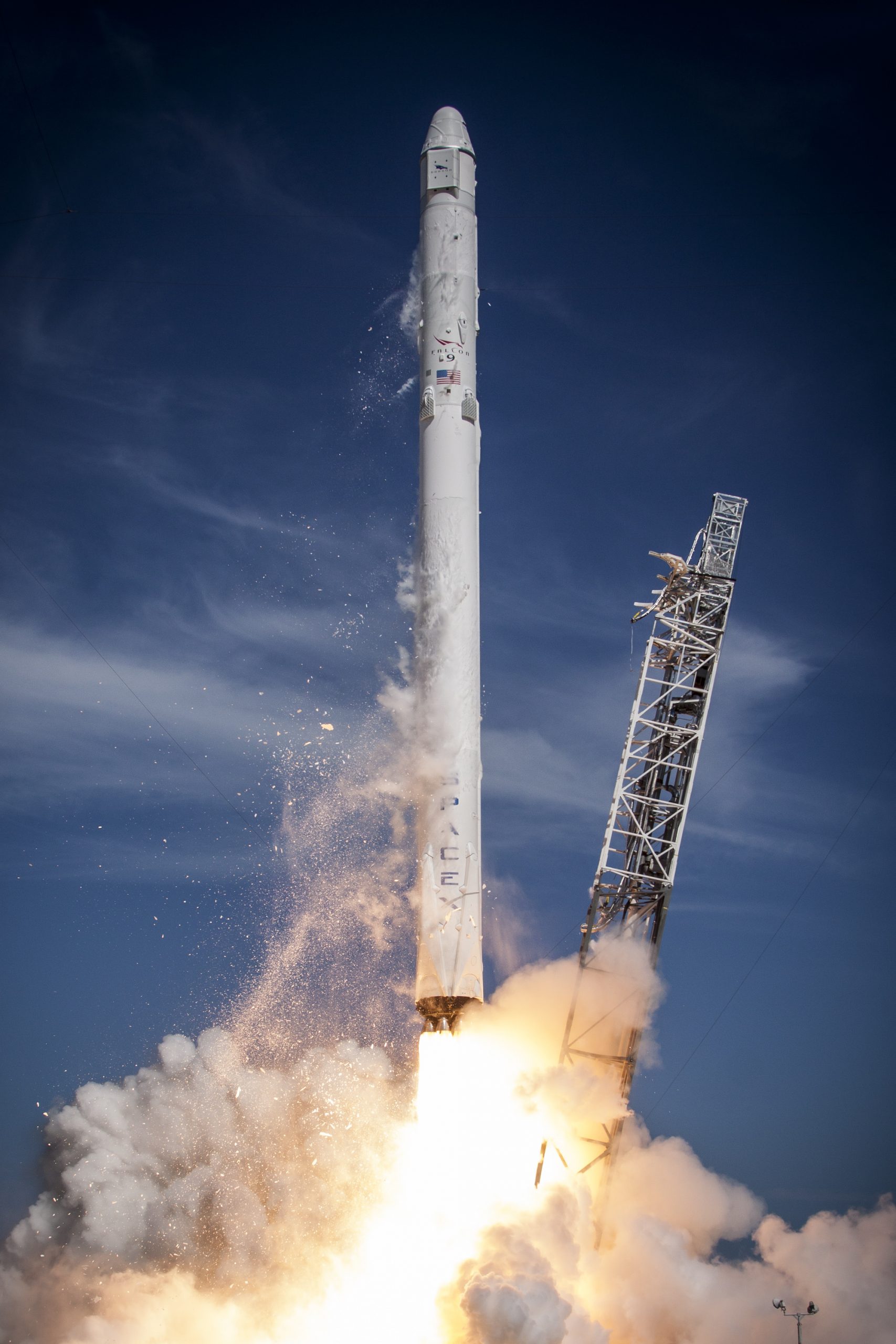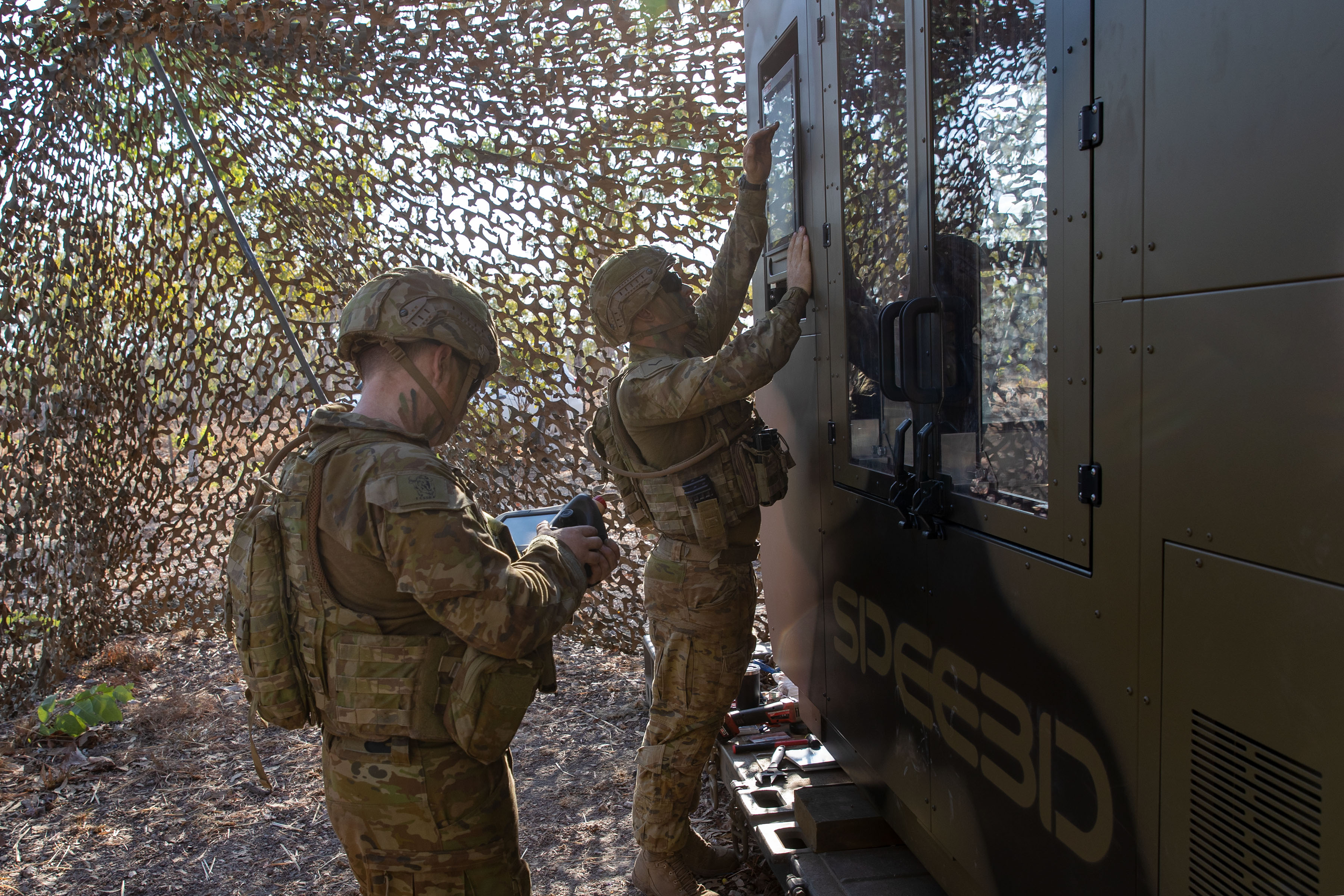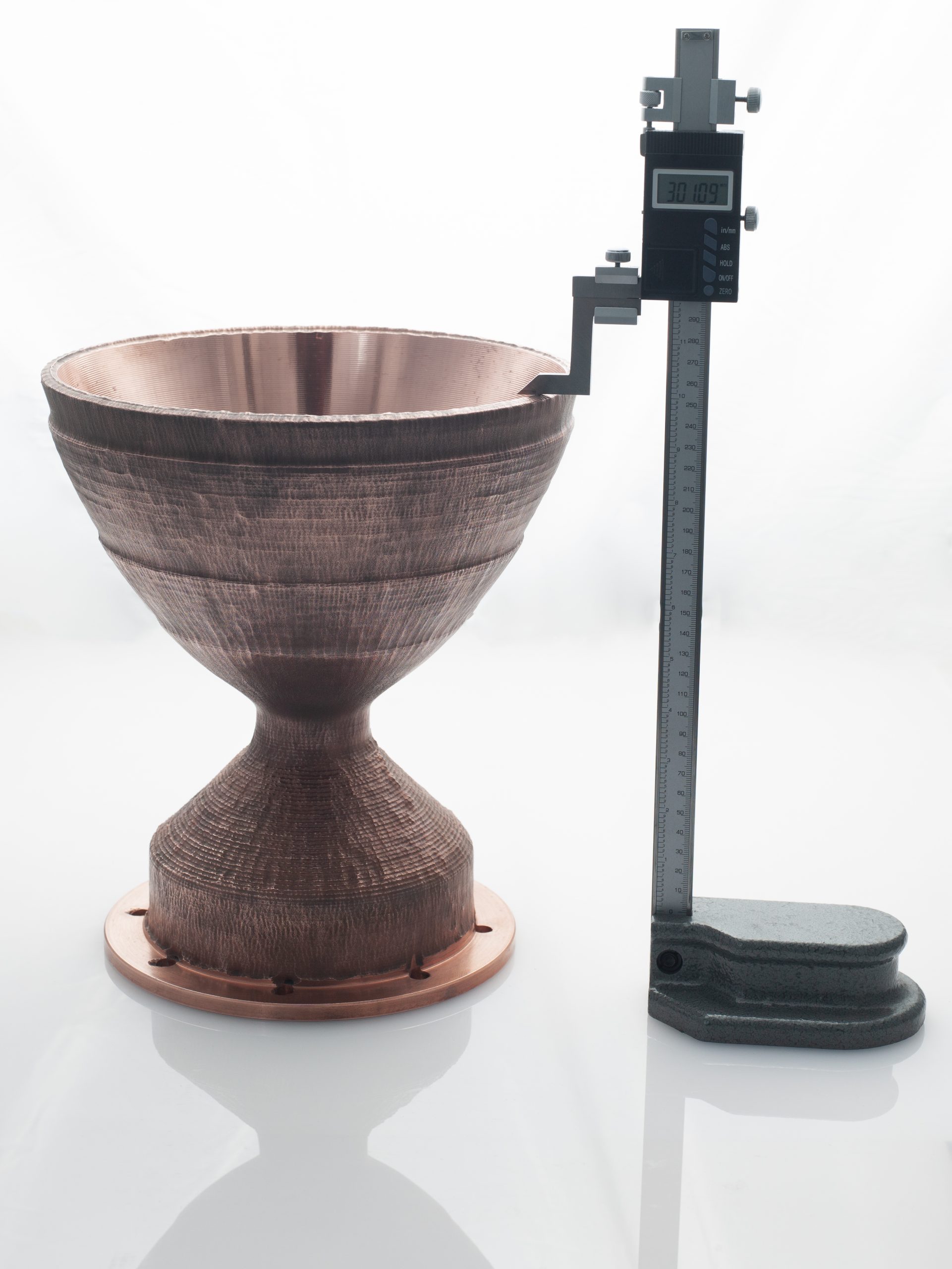Australian cold spray 3D printer manufacturer SPEE3D has announced plans to “revolutionize” the space sector with low-cost metal 3D printed rocket engines.
The company has received AUD $1.25 million from the Australian Government’s Modern Manufacturing Initiative (MMI) ‘Space’ Translation Stream grant, and a further AUD $312,000 from the Northern Territory Government, to carry out its latest project, SPAC3D.
Through SPAC3D, SPEE3D will seek to manufacture high-quality, inexpensive metal 3D printed rocket engines for Australia’s emerging industrial space industry using its cold spray technology.
“SPEE3D has developed a new way to manufacture rocket engines quickly with our advanced manufacturing process,” said Steven Camilleri, SPEE3D’s CTO. “The MMI grant will allow us to work with other partners in Australia to manufacture and test flight ready engines for the emerging industrial space market.”

Rising from the ground up
SPEE3D’s patented cold spray additive manufacturing technology is reportedly capable of printing metal parts between 100 and 1,000 times faster than traditional metal 3D printing methods. The technology is also supposedly one of the only processes capable of printing metal parts on-demand at a cost that is more competitive than conventional manufacturing.
Instead of relying on lasers or other heat-based energy sources, cold spraying leveraged kinetic energy to spray a metal powder onto a substrate via a high-velocity compressed gas stream. This gives the material enough energy to deform and bond to the solid part below, forming additional layers.
In February 2019, SPEE3D was selected by the Royal Australian Navy to take part in a two-year AUD $1.5 million project to pilot trial its metal 3D printing technology with the aim of streamlining the maintenance of the Navy’s patrol vessels.
A year later, the company landed another AUD $1.5 million defense project which saw 20 soldiers undergo training in the company’s cold spray technology. Once this proved successful, the soldiers attempted to utilize their newfound knowledge in a three-day field trial of SPEE3D’s WarpSPEE3D 3D printer in the harsh environments of Australia’s Northern Territories.
Able to be transported and unloaded under difficult conditions and operational in under 30 minutes, the WarpSPEE3D was found to be capable of printing large metal parts up to 40kg in weight at a speed of 100g per minute.
Following the success of the initial field trial, the Australian Army carried out a second set of field exercises using an upgraded version of the printer. Over two weeks, the soldiers were able to 3D print end-use components at temperatures up to 37 degrees celsius, proving the technology a reliable solution for producing military parts on-demand in the field.
The company recently announced it had won the ADMA Foundation’s Land Forces SME Innovation Award for its machines’ ability to improve military supply chains with on-demand 3D printing capabilities.
Having proved its technology for defense applications on the ground, SPEE3D is now turning its attention to the stars with its new SPAC3D project.

3D printing low-cost rocket engines
SPEE3D has identified the billion-dollar industry of manufacturing space components as its next venture, with the sector set to experience strong growth in demand over the next few years. However, long lead times for production-ready rocket engines is still a challenge faced by organizations across the globe.
The company has already demonstrated its cold spray technology’s capabilities to produce rocket engine components. The firm’s WarpSPEE3D 3D printer produced a 17.9kg copper rocket nozzle liner in just three hours at a cost of less than $1,000. Now, with government backing for its SPAC3D project, SPEE3D will look to apply its technology to the manufacturing of high quality metal 3D printed rocket engines that remain inexpensive compared to those that are conventionally produced.
The MMI aims to help Australian manufacturers to scale up and create jobs to bolster the country’s manufacturing capabilities and provide new opportunities to access domestic and global supply chains. According to SPEE3D, the SPAC3D project will offer Australia’s burgeoning space industry the opportunity to become the world’s leading manufacturer and exporter of rocket engines.
“The Government’s Modern Manufacturing Initiative is all about backing our manufacturers to be more competitive, resilient and able to take on new domestic and global markets,” said Christian Porter, Minister for Industry, Science, and Technology. “This matched government funding will help SPEE3D to grow its business and create jobs, while also spurring further investment in the manufacturing sector and cementing Australia’s reputation as a nation that creates high-value products.”
Now that SPEE3D’s SPAC3D project has been greenlit, the company will embark upon conducting hot fire tests and validation of the usefulness of its 3D printed rocket engines for commercial space vehicles.
“This is another big leg up for SPEE3D who are taking the advanced manufacturing world by story – all the way from the Top End,” added Michael Gunner, Northern Territory Chief Minister. “We are proud to back SPEE3D through our Local Jobs Fund, they are a true testament to the Territory, and its projects like SPEE3D that strengthen us as Australia’s comeback capital.”

Advances in 3D printed rocket engines
SPEE3D faces tough competition in the race to space, however, with multiple private companies seeking to develop and launch next generation launch vehicles, satellites, and rockets of their own.
For instance, British aerospace firm Orbex is gearing up to the launch of its Prime launch vehicle, having recently commissioned the largest industrial 3D printer in Europe from AMCM to rapidly 3D print rockets in-house, while propulsion system manufacturer Aerojet RocketDyne’s RL10 rocket engine successfully passed NASA hot-fire tests in May.
Elsewhere, California-based aerospace firm Rocket Lab has unveiled its next-generation reusable 3D printed rocket, Neutron, rocket manufacturer Relativity Space has raised a further $650 million to ramp up production of its new 3D printed Terran R rocket, and aerospace propulsion developer Agile Space Industries has acquired 3D printing service bureau Tronix3D to optimize the performance of its propulsion systems used to power NASA and SpaceX’s upcoming lunar missions.
Most recently, rocket engine manufacturer PANGEA Aerospace and additive manufacturing engineering firm AENIUM formed an industrial partnership to develop and industrialise 3D printed propulsion systems for the European space market using NASA’s GRCop-42 copper superalloy.

Nominations for the 2021 3D Printing Industry Awards are now open, have your say who is leading the industry now.
Subscribe to the 3D Printing Industry newsletter for the latest news in additive manufacturing. You can also stay connected by following us on Twitter and liking us on Facebook.
Looking for a career in additive manufacturing? Visit 3D Printing Jobs for a selection of roles in the industry.
Subscribe to our YouTube channel for the latest 3D printing video shorts, reviews and webinar replays.
Featured image shows SPEE3D is turning its attention to 3D printing rocket engines. Photo via SPEE3D.



